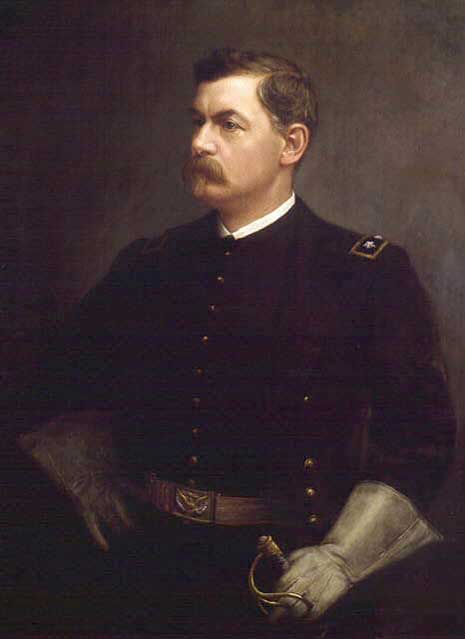A New Man in Charge: George B. McClellan (Part 1)
Part 1: Fooled by the Guns at Munson’s Hill
The Union army first came to occupy Munson’s Hill, Fairfax County, Virginia, on September 28, 1861.
Entering the fall of 1861, the Union army’s setback at Manassas provided the impetus for a change in leadership. One of the key figures to emerge from this shake-up was George B. McClellan, a career soldier who—like so many of his contemporaries, both northern and southern—was trained at the United States Military Academy.
As the armies jostled for position in northern Virginia after Manassas, McClellan began building and training his large number of recruits, many of whom had never experienced life away from home. McClellan inspired these young men and turned them into a significant army. By the time he paraded his troops before President Abraham Lincoln on November 20, 1861, his force was 70,000 strong. It was and still is the largest military parade on American soil.
McClellan is something of a paradoxical figure in U.S. military history. While he was clearly talented and charismatic, he was also reluctant to fight. He listened to his chief spy, Allan Pinkerton, to a fault. Pinkerton’s information was sometimes incorrect, and McClellan, in response to the information, often hesitated or failed to act aggressively enough for Lincoln.
One of McClellan’s poorest episodes took place in late September 1861, just outside of Washington, D.C. The incident at Munson’s Hill was so bleak that McClellan falsely accounts for it in his memoir, McClellan’s Own Story. McClellan wrote, “Towards Manassas the very important advanced points of Upton’s and Munson’s Hills were held by strong works, with some small batteries near by.”
Later, after the Confederate forces removed to another position, McClellan described the Union takeover of these locations, stating, “The maneuvering in advance by our flanks alarmed the enemy, whose center at Munson’s and Upton’s was much advanced. As soon as our pickets informed me that he had fallen back I rushed forward and seized those very important points.”
The facts of the matter, however, eluded McClellan in his autobiography, probably out of shame. Military historian Jon Latimer succinctly describes the entire episode in his tome on military legerdemain, A History of Bluff in Wartime:
At this time the Union intelligence service was run by the Pinkerton Detective Agency, founded by the ex-Glaswegian Allan Pinkerton, which later became renowned throughout the West. As a military intelligence bureau, however, it was hopelessly inadequate and provided wildly exaggerated reports of rebel strength in the area immediately south of Washington. Despite ample evidence to the contrary, Pinkerton reported Confederate forces at totaling 270,000 men, with 150,000 within striking distance of Washington. [McClellan] refused to move until he had 270,000 men of his own. . . .Then, in September rebel pickets were driven surprisingly easily from a position they had occupied within a few miles of Washington, revealing that the guns McClellan’s spies had assured him were trained on the capital were nothing more than stripped logs, painted black with wagon wheels tacked onto the side: one scornful reporter christened them “Quaker Guns.”
In the two months and one week since the Battle of Manassas, the Union army had been kept in place, at least in this little field in northern Virginia, by so many harmless sections of tree trunks and archaic wagon parts. Sadly, McClellan would fall victim to this “Quaker Gun” strategy more than once, as it was an easily deployed measure for a Confederate army that had significantly less artillery than its opponent.
Such encounters with make-believe weapons and inflated interpretations of the enemy’s numbers would take a toll on McClellan’s reputation during the war, and give McClellan's detractors ammunition to use against him.
—Warren Perry, Catalog of American Portraits
Next week—Part II: Young Napoleon Builds an Army
